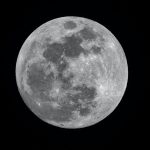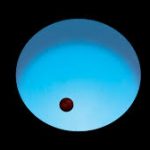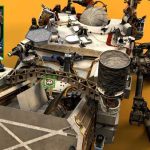Nasa astronauts going back to the Moon will be bombarded with cancerous rays 200 times greater than on Earth, study finds0
- From Around the Web, Space
- September 30, 2020
Nasa is expected to send astronauts back to the moon by 2024

Nasa is expected to send astronauts back to the moon by 2024

NASA and SpaceX confirmed the specific launch date for the first crewed mission of the Crew Dragon spacecraft.

The first results from ESA’s Characterising Exoplanet Satellite (Cheops) exoplanet mission has revealed one of the hottest and most extreme planets orbiting another star. Located 322 light years away in the constellation of Libra, WASP-189 b is an ultra-hot Jupiter with a temperature so high that iron boils into a gas.

Perseverance is one of a few Mars spacecraft carrying laser retroreflectors. The devices could provide new science and safer Mars landings in the future.

Two researchers advocate sending a quick mission to Venus to try and quell debate over whether our sister planet’s middle atmosphere does in fact harbor some sort of microbial life.

The genomes of our closest relatives, Neanderthals and Denisovans, have been sequenced and compared with that of modern humans. However, most archaic individuals with high-quality sequences available have been female. In new research, a team of geneticists from the United States, China and Europe has sequenced the paternally inherited Y chromosomes from three Neanderthals and two Denisovans; comparisons with archaic and modern human Y chromosomes indicated that, similar to the maternally inherited mitochondrial DNA (mtDNA), the human and Neanderthal Y chromosomes were more closely related to each other compared with the Denisovan Y chromosome; this result supports the conclusion that interbreeding between early Homo sapiens and Neanderthals replaced the more ancient Denisovian-like Y chromosome and mitochondria in Neanderthals.

NASA is awarding up to $5 million in prizes for technology that will provide power storage and management on the Moon.

This new vision system, called Gennaris, bypasses damage to the optic nerves

New radar data add to evidence of water under Mars’ south pole, but it’s not “a slam dunk yet”

Billions of years ago, long before oxygen was readily available, the notorious poison arsenic could have been the compound that breathed new life into our planet.



